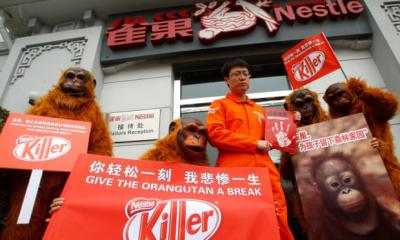Warren Buffett said that in Business, “It takes 20 years to build a reputation and five minutes to ruin it.” It has been more than two decades now since a 1996 issue of Life magazine depicted a Pakistani boy sewing a Nike soccer ball, reportedly for six cents per hour. After the story, the company lost more than half its market capitalization in just one year – it took Nike six years of demonstrated social responsibility to recuperate. Even today Nike is – fairly or unfairly – ranked low on lists of ethical companies. It has survived financially, but the reputation of the brand may never recover.
Environmental reputations can be just as hard to rebuild. NGOs like Greenpeace and the World Wildlife Fund believe in the potential fragility of the environment, and they see the potential fragility of companies’ brands as a means of pressuring them to change.

Can Big Business and the Environment Get Along?
“When Greenpeace reaches for its toolbox, it tends to find only one tool, and that’s a mallet,” said Scott Poynton, founder of the Forest Trust “and it tends to beat people over the head with it.”
If you want evidence the mallet approach works, consider KitKat. In 2010, Guinness World Records certified that KitKat was the world’s most global brand, sold in more countries than any other that year. But on 17 March that year, Greenpeace released a video parody of a KitKat commercial. The clip opens with a bored office worker feeding papers into a shredder. Then, the screen turns red with the text “Have a break?” The worker opens a KitKat wrapper, but instead of fingers of chocolate...
This article is excerpted from Yossi Sheffi's Balancing Green on MIT Press.